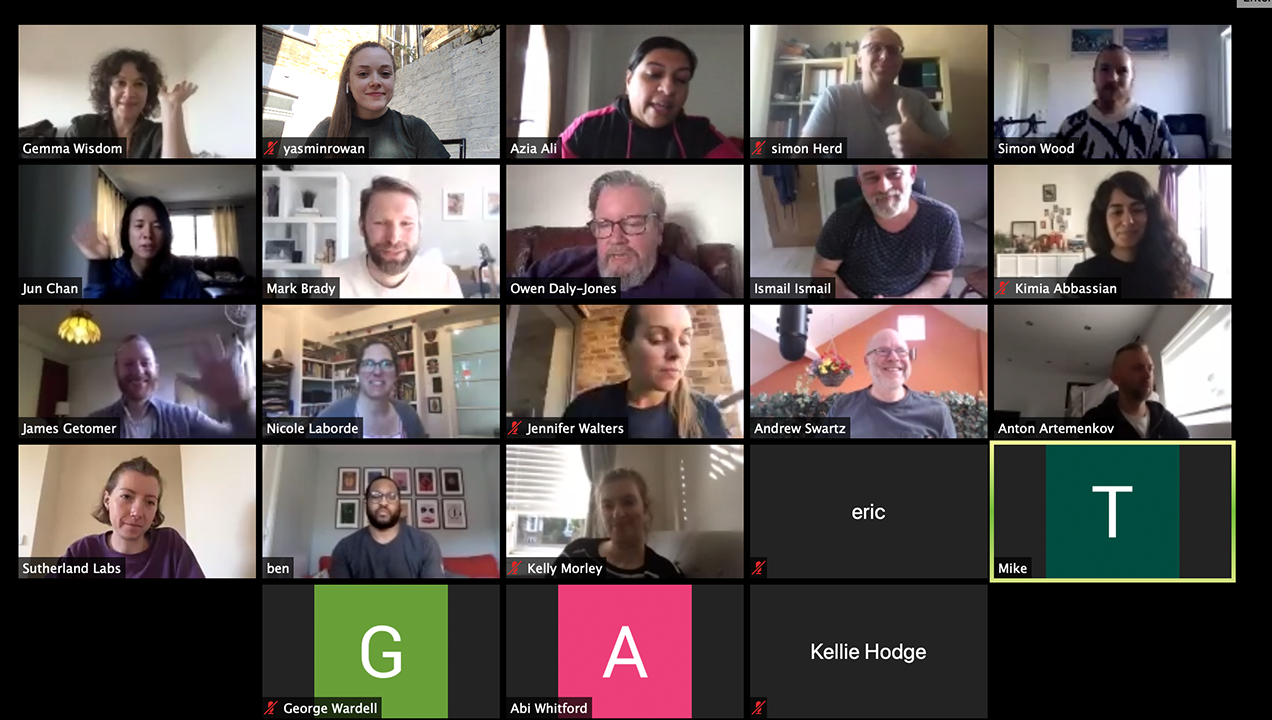Remote Research: 10 tips to keep observers engaged
UX research has decisively moved online in response to Covid-19 and a lot of recent attention has rightly been paid to how to do this well. However, a big part of the reason why UX teams gather at face-to-face testing is that it provides a forum for active observation and immediate issue resolution as teams jointly annotate printed screenshots on white walls or write vast numbers of post-it note observations.

All image credit: Sutherland Labs
When an observer watches remotely, there’s huge potential for distraction and disengagement, so this collaborative dynamic can be lost and sessions become less agile. We’re acutely aware of this danger so have some guidelines to help avoid it.
Introduce active observation plans when you invite observers
- Observers planning their day may be thinking about some multi-tasking alongside their viewing, as a result of passively observing in the past. A basic briefing about your plans for active observation and guidelines for participation before the session will help to overcome this.
Set observer expectations about minimum specs they’ll need
- If you’re observing remotely, you’ll probably be using a laptop or similar device. Inform observers of any minimum specs for the computer or laptop they intend observing on. Some online collaboration tools don’t work well with low specs, so this helps avoid frustration during the session.
Consider timezones
- If you’re likely to have international observers, some shifting of session times may encourage them to observe. We don’t encourage wholesale timeshifting, as the ease of session recruitment is paramount, but there may be a happy medium, for example starting later in the morning for European sessions watched in the U.S.
Provide a collaboration forum
- In research studios, white walls and printed screenshots are the focal point of active observation. You can replicate these by using tools such as Mural and Miro, to share screen-flows and post-it notes online.
- The tools are simple to use, but it also helps observers if they try the tool before the first session starts. Creating an online board for first-time users before the session can help them to make the most of the experience.
Pilot, pilot, pilot
- Pilot your use of collaboration tools in the same way you trial the user session format. Once you’ve set them up, get a team member to work through to check it will work as expected and core items (such as screenflows) are locked to prevent accidental deletion by over-enthusiastic observers.
Use a prototyping platform which allows immediate update
- We advise against knee-jerk design changes during test days, but it can be very useful to make design changes once trends become clear to observers. Use of an online prototyping tool, rather than relying on downloads makes this easier for remote research.
- There are exceptions to this, for example if testing in a country with poor bandwidth, but it’s a good general principle.
Actively manage the analysis process
- Observation room analysis sessions always work better when a team member leads the analysis. They ensure meaningful insights and suggestions are not lost within a blizzard of post-it notes. The same principle applies even more online.
- Use the collaboration tool online chat feature to guide and prompt for response, for example if some areas of the screenflow are sparsely commented.
Maintain a level of separation from the user
- You’re encouraging engaged observers, but it can go too far. Ensure that any observer questions are addressed via the facilitator rather than going directly to the participant. There may be very good reasons for the question, but it can unnecessarily pre-empt the facilitator and send the session off-track.
- This issue can arise if the same tool (e.g. Zoom or Google Meet) is used for both connecting to the user and the observers, but settings for chat, audio and video are not controlled before the session.

Image credit: Sutherland Labs
Create moments of observer engagement
- When attending face-to-face sessions, ad hoc analysis often happens between sessions, at lunchtime or the end of day. You can also schedule these when observing online. Do make prospective observers aware of them before testing begins, otherwise it’s easy for them to drop out of remote observation at the end of session blissfully unaware of the impending wash up session.
- If you’re testing in a country with poor bandwidth, workarounds are possible, for example, uploading videos straight after the session and scheduling the wash up at the end of each half day of testing can help remote observers track and engage with what’s happening and contribute before the next half day begins.
Don’t forget useful tool features
- Tools such as Zoom have features such as auto-transcription, which can be very helpful for rapid analysis if shared with observers once the file is processed. The transcript provides an easy shortcut to replay the relevant video moment, so pointing observers towards this after the session can help them assimilate what’s happened if they couldn’t observe in real time.
If you would like more information on remote research then please get in touch with Simon Herd or one of the team and take a look at our recent blog posts on the topic.
